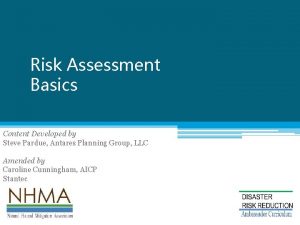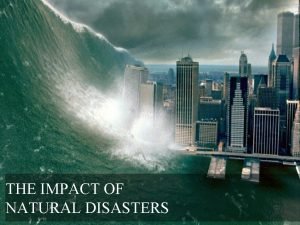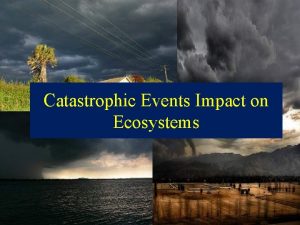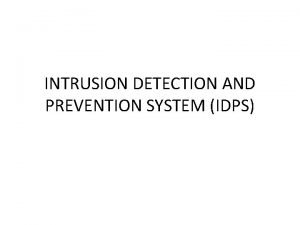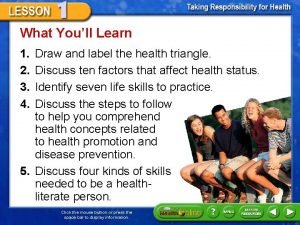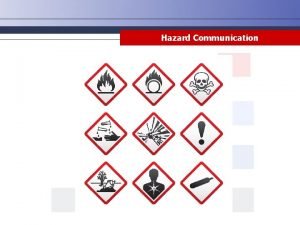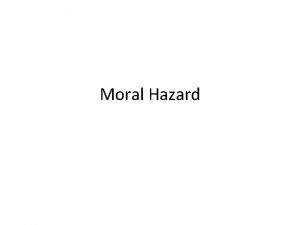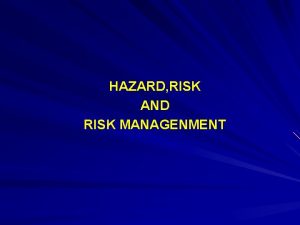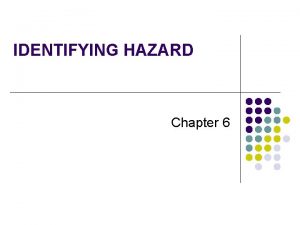Natural Hazard Impact Factors n Natural events can








- Slides: 8

Natural Hazard Impact Factors n Natural events can cause great loss of life or property damage: n n 2004: Asian Tsunami: >200, 000 1970: Bangladesh Cyclone: 300, 000 1976: China earthquake: 300, 000 Different types of Natural Hazards: n n n Volcanism, earthquakes, Hurricane, tornado, Tsunami, Flooding, Landslides Impact of a disaster is related to magnitude (how big) and frequency (how often). Actual damage depends on other factors too, such as population, land-use, local geology etc. Catastrophe: immense damage: recovery and rehabilitation is a long process – New Orleans still not recovered after now 10 years

Damages from Natural Hazards in US

Evaluating Hazards § Fundamental Principles: § Hazards are repetitive and predictable § Risk Analysis is important for understanding impact § Hazards are linked, e. g. , volcano, earthquake, tsunami, landslide, flooding, forest fire. . § Human interference can magnifying damage § Consequences can be minimized for some types of hazards but not others.

Disaster Prediction n n Location: q e. g. , Volcanoes and earthquakes along plate boundaries Probability of occurrence q Hazards are statistical q With sufficient data probability of occurrence can be calculated Precursor events q Volcanoes, earthquakes, landslide, flooding, often associated with precursor events Forecasting q Is possible by monitoring hazards e. g. , hurricanes, tsunamis, volcanic eruption etc Warning q Should be issued even at the risk of the hazard not materializing. However, the public doesn’t understand this.

Risk Assessment n n n Risk Determination q Risk= probability X damage Acceptable Risk q Risk-tolerance level of the society q Can vary: High for automobiles but low for nuclear accident Problem and opportunities q Lack of long term data– how do we calculate risk? q Information may be complex and difficult to analyze e. g. , what is the effect of radiation leak from a nuclear reactor? q Better risk assessment will lead to better decisions

Human Response to hazards n n n Reactive – traditional response q Stages: n Emergency: Search and Rescue, shelter, opening roads n Restoration: water and power, return to home, cleaning of rubble n Reconstruction I: Return to pre-disaster level n Reconstruction II: improvement q Rapid Restoration can be counter-productive Anticipatory – a better way to reduce damage q Hazard perception by people and by government q Land-use planning: avoid hazardous locations q Insurance: often not extended to high risk areas q Evacuation plans and Disaster preparedness Artificial control q Difficult, expensive and often cause more harm n Channelization of Kissimmee river n Sea walls, dams…

. Global climate and hazards n A. Global and regional climate change may significantly affect incidence of storms, landslides, drought, fires § a. sea level rise may increase coastal erosion § b. shift in food production areas § c. expansion of deserts and semi-deserts

Population increase, land-use change, and natural hazards n A. Population increase and hazardous events – 1. as population increases, need for planning to minimize losses from natural disasters also increases n B. Land-use change and hazardous events – 1. past half-century has seen dramatic increase in great catastrophes – 2. vast majority of natural disaster deaths between 1985 -1995 were in developing world § a. Hurricane Mitch: hillsides stripped because of heavy rains on cleared and burned land § b. Yangtze River: timber harvest and conversion to agriculture has increased flood hazard

